Goezu-Samuel family. Collection
Contact Kazerne Dossin Documentation Centre: archives@kazernedossin.eu Markus Goezu was born in Antwerp, Belgium, on 21 September 1908. His father Hersshel Goezu, originally named Guzy, had emigrated from Poland to Belgium in March 1905. Markus’ mother Dora Freidman and her five oldest children followed him to Antwerp in August 1905. In Belgium, apart from Markus, three more children would be born. In 1913 the Goezu family moved from Antwerp to Brussels. Markus became a diamond worker. In 1925 he obtained Belgian nationality. He married Charlotte Samuel (born on 29 July 1911 in Antwerp) and their oldest son André, nicknamed Dédé, was born in Antwerp on 5 July 1939. The couple still resided in Antwerp when Nazi-Germany invaded Belgium in May 1940. Markus and Charlotte shared their home with Charlotte’s sister Renée Samuel (born on 19 February 1902 in Antwerp), her husband Abraham alias Adolf Kremer (born on 19 August 1900 in Antwerp) and their baby Rosette (born on 11 February 1940). In the years that followed, the Goezu-Samuel family obeyed the anti-Jewish decrees. In December 1940 they registered themselves in the municipal Jewish Register. Markus registered his second son Hugues, nicknamed Guy, only a few days after he was born on 10 August 1941. The family became a member of the Association of Jews in Belgium in March 1942 and purchased and wore the yellow Star of David as of June 1942. However, the family also tried to salvage some of their belongings. Markus’ brother-in-law Abraham Kremer for example transferred his partnership in his firm to a non-Jewish associate in February 1941. On 14 August 1942, Abraham was sent to northern France where he worked as a forced labourer for Organisation Todt. He did not survive deportation from France via the Dossin barracks to Auschwitz-Birkenau with Transport XVII on 31 October 1942. On 21 September 1942 Markus’ wife Charlotte Samuel was arrested in Antwerp, despite her Belgian nationality, during a raid at the ration stamp office. That afternoon Markus was arrested at home. Both were detained at the Dossin barracks, as was Charlotte’s sister Renée Samuel (circumstances of arrest unknown). Children André, Hugues and Rosette were probably also held at the barracks for a short while after which the Association of Jews in Belgium’s intervention office obtained their transfer to a certain Wouters de Leeuw family. When Jews with Belgian nationality were released from the Dossin barracks on 26 June 1943, Markus, Charlotte and Renée were allowed to return home where they were reunited with their children. The release of Belgian Jews created a false sense of safety. On 3 and 4 September 1943, the Nazis organised a raid focusing on Jews with the Belgian nationality. Former Dossin detainees were lured to the offices of the Sicherheitspolizei-Sicherheitsdienst where they were arrested again. Both Markus Goezu and Renée Samuel fell victim to the trap. They were deported from the Dossin barracks to Auschwitz-Birkenau via Transport XXII B on 20 September 1943. Markus’ last sign of life came from Fürstengrube in February 1944. Renée was last seen in 1944. Neither survived. Charlotte Samuel then placed her oldest son André and her niece Rosette in hiding at the farm of Pierjan and Johanna Smeulders-Van Dijck in Wuustwezel. Granddaughter Godelieve Ceuppens took care of both children while Charlotte was hiding nearby with Hugues. When in April or May 1944 Charlotte was denounced, the Smeulders family took her and Hugues in too. The family remained in Wuustwezel until six months after liberation. When Charlotte returned to Antwerp, Godelieve joined her and became the governess of the three children. Charlotte Samuel passed away in 1973. André, inspired by his time in Wuustwezel, studied art. After obtaining his degree in 1963, he performed his military service at the Dossin barracks where the Belgian army had founded an administrative school in 1948. After his service, André moved to Paris, became a celebrated artist, and won prizes and organised exhibitions all over the world. Hugues remained in Antwerp, Rosette emigrated to Israel. André remained in contact with the Smeulders-Van Dijck family which in 1995 was recognised as Righteous among the Nations. This collection consists of: KD_00126_0001: Documents and photos regarding the Goezu-Samuel family, including pre-war photos of relatives ; the Belgian IDs of Markus Goezu and Charlotte Samuel ; a declaration of nationality for Markus Goezu ; a post-war statement by Arthur Pierre regarding the plundering of the Goezu-Samuel and Kremer-Samuel family home in 1943 ; wartime photos of André Goezu, Hugues alias Guy Goezu and their cousin Rosette Kremer while in hiding in Wuustwezel ; photos of their rescuers Petrus and Johanna Smeulders-Van Dijck and their granddaughter Godelieve Ceuppens ; documents regarding the recognition of the Smeulders-Van Dijck family as Righteous among the Nations ; documents regarding the business of Rosette Kremer’s father Abraham alias Adolf Kremer ; post-war documents regarding the recognition of the Goezu-Samuel family members as war victims ; post-war photos of André Goezu during his military training at the Dossin barracks in 1963. KD_00126_0002: A series of 128 postcards from the Jewish community in Budapest dated 1913-1936, purchased by André Goezu as Judaica. Digital copy available as collection KD_000126 at Kazerne Dossin
- EHRI
- Archief
- be-002157-kd_00126
- Hiding
Bij bronnen vindt u soms teksten met termen die we tegenwoordig niet meer zouden gebruiken, omdat ze als kwetsend of uitsluitend worden ervaren.Lees meer





